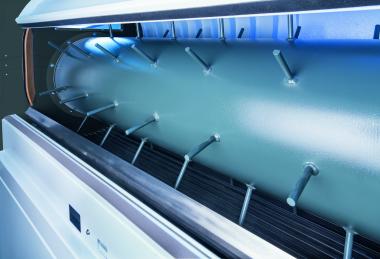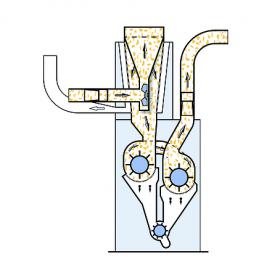Trützschler: New Pre-Cleaner CL-X for Cotton
Double the production rate, with lower energy consumption per kilogram of fiber material – that might sound like a contradiction, but the new Trützschler pre-cleaner CL-X makes it possible. It gently and reliably removes coarse contaminants like leaf debris, stalks or seeds from cotton with minimum loss of good fibers. The pre-cleaner CL-X provides more efficiency and lays the foundation for a high-quality end-product before the cotton is further processed in mixers and fine cleaners.
CL-X features at one glance
- Continuous production of 1,600 kilograms per hour for present blow room configuration.
- 30% energy saving compared to the current benchmark.
- Integrated WASTECONTROL for automatic adjustment recommendation of waste excretion to avoid unnecessary fiber loss.
- 2.60 m long cleaning section.
- New and improved grid geometry for better separation and gentle tuft treatment.
- Material draft due to 10 % higher speed of second opening roller for reliable and consistent fiber transport.
- Optimal cleaning level and minimal fiber loss due to individual and stepless grid adjustment for each opening roller by motor.
- Gentle tuft treatment with adjustable opening roller speed.
- Synchronized lot management (automatic lot change for up to three lots).
- Connection possibility for a waste box (for waste analysis).
- Lower cost of ownership.
Trützschler GmbH & Co. KG









